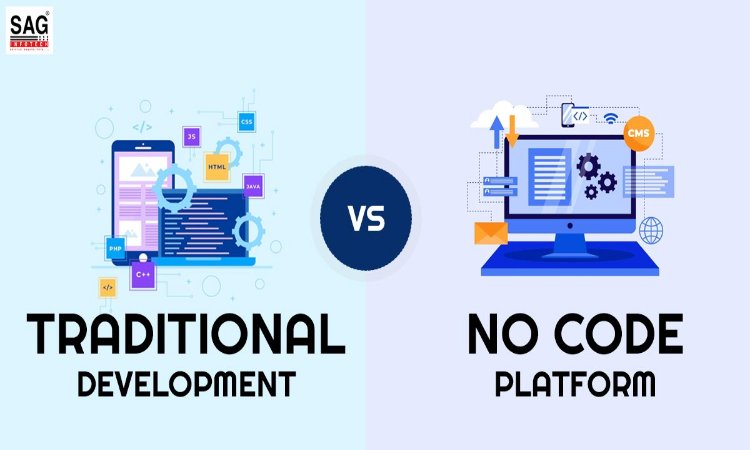Introduction
In the frantic race to the creation of digital solutions, the debate between no-code platforms and traditional coding has never been more germane. Whether to learn coding or for a no-code tool to build your app or web-site? The answer will depend on what you want to accomplish, how much resources you have, and how much complexity you have in what you’re building. The purpose of this blog is to explain the differences, advantages, as well as ideal use case for each the approaches to help you determine which one suits your needs.
What is Traditional Coding?
Traditional coding is the classic way in which software is developed, that is writing code in languages such as Java, Python or Java. Using this method gives full control over the way software operates and communicates with databases, servers and user interfaces.
It’s most suitable for projects that are highly customized or large scale, where performance, security and accuracy are important. It nevertheless requires talented developers, a greater amount of time, and greater cost.

What is No-Code?
No-code platforms provide users with an opportunity to develop applications without intervening with the code. Instead, they use visual editors, drag-and-drop interfaces and prebuilt logic components to build apps in a flash. Solutions such as Tentoro, Bubble.IO, and Webflow enable non-technical people to make their digital ideas become reality.
These are perfect places if you want to prototype quickly, MVP your MVP, build internal tools or automate a workflow – no need for dev teams.
Key Differences (Speed, Cost, Scalability, Customization)
No-code development gives a major advantage concerning speed because users can create useful applications in several hours or even days. On the other hand, traditional coding usually takes weeks, maybe even months to develop because of complexity and detail. In terms of cost, no-code is usually cheaper as it removes the necessity to employ specialists. Traditional coding, however, requires a higher budget since only professional coders are used, and the projects take longer to complete.
In terms of scalability, the best platforms for no-code are small and mid-scale applications. They perform well in the average usage and traffic but will have limitations when it comes to scaling to enterprise level. Traditional coding is particularly successful here, providing strong and scalable solutions that can support high performance applications.
Customization is another major differentiator. No-code tools are constrained to the possibilities and flexibility offered by the platform while traditional coding provides absolute control from both a design and functionality perspective. Finally, the learning curve for no-code is very low since it has intuitive drag-and-drop interface, traditional coding however, requires in-depth knowledge of programming languages and development frameworks to operate, thus making the learning curve high.
When to Use No Code and When to Code?
Use No-Code when:
- The MVP has to be launched in a hurry.
- Your app has typical features such as forms, dashboards, or even workflows.
- Limited technical resources or budget on your part.
- Your creating internal tools or a onetime automations.
- Your are testing an idea before committing fully in the development.
Use Traditional Coding when:
- Your application needs a custom or complex logic developed.
- You are creating a high performance product of complex architecture.
- You require tight control of security, integrations or data handling.
- Your product has to be scalable for thousands / millions of users
- You have the support of experienced developers and bigger budgets.
Hybrid Approaches: Combining No-Code with Custom Code
More and more companies are embracing hybrid models: speed of no code plus the power of custom code. For instance, the marketing team might want to use a no-code dashboard that they built on Tentoro with the backend logic being the responsibility of custom APIs.
A lot of code snippets, API integration, and the possibility of a “low-code” model is already supported by various modern no-code platforms. It means that developers can expand functionalities rather than building everything anew. This approach in the hybrid form can be flexible and scalable without straining the time and cost of the development.
Conclusion
Saying you should choose between no-code and traditional coding is not a matter of generalization, it’s a matter of picking the right sledge. No-code requires speed and accessibility, traditional coding requires precision and depth. If you’re a startup or an untechnical team in search of rapid launch then no-code solutions such as Tentoro can be a game changer.
Tentoro acts as a tool to bridge the gap by providing powerful no-code and low-code features allowing users to build smart applications with ease. Whether you want to develop a simple internal tool or introduce AI to your business process, with Tentoro, you will have all the necessary flexibility and scalability to carry out your digital shift.

